There’s a special kind of thrill that comes with spotting an animal that isn’t found anywhere else in the world. If you’re fascinated by unique wildlife, the United States is home to a plethora of animals that you won’t find anywhere else. From deserts to forests, the country offers diverse habitats that sustain these remarkable creatures. Whether you’re planning a road trip or just a virtual tour, here are 13 exclusive animals you can find only in the U.S., along with where to keep your eyes peeled for them.
1. Meet the Pronghorn: America’s Speedster
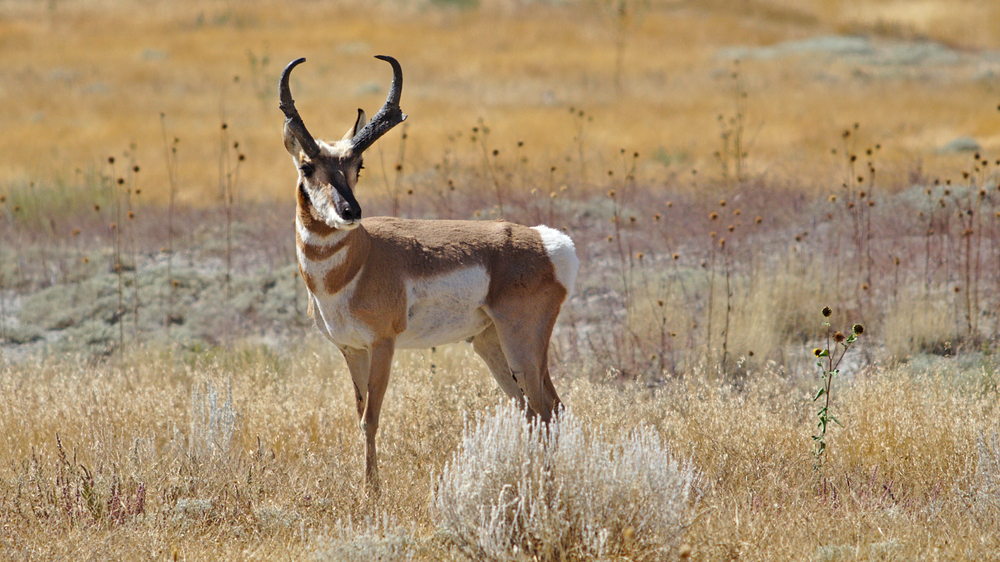
Imagine the agility of a cheetah combined with the endurance of a marathon runner, and you’ve got the pronghorn. Often mistaken for antelopes, pronghorns are actually a unique species found only in North America. They are speed demons, clocking in at speeds up to 55 mph, making them the second-fastest land animal following the cheetah. However, unlike their African counterpart, pronghorns can maintain high speeds over longer distances, a useful trait when evading predators in the vast openness of places like Wyoming’s Grand Teton National Park. Pronghorns have distinctive white and brown markings and backward-curving horns which they shed annually.
These animals are incredibly adapted to their environments, with large eyes that provide an almost 360-degree field of vision. Their habitat stretches across the open plains of the American West, from southern Canada down to northern Mexico, according to the National Park Service. Conservation efforts have helped stabilize their population, rebelling from near extinction in the early 20th century. If you’re looking to catch a glimpse of these speedsters, take a drive through the prairies and keep your binoculars handy. They often gather in large herds, especially during migration, providing a spectacular sight.
2. The Intimidating American Alligator
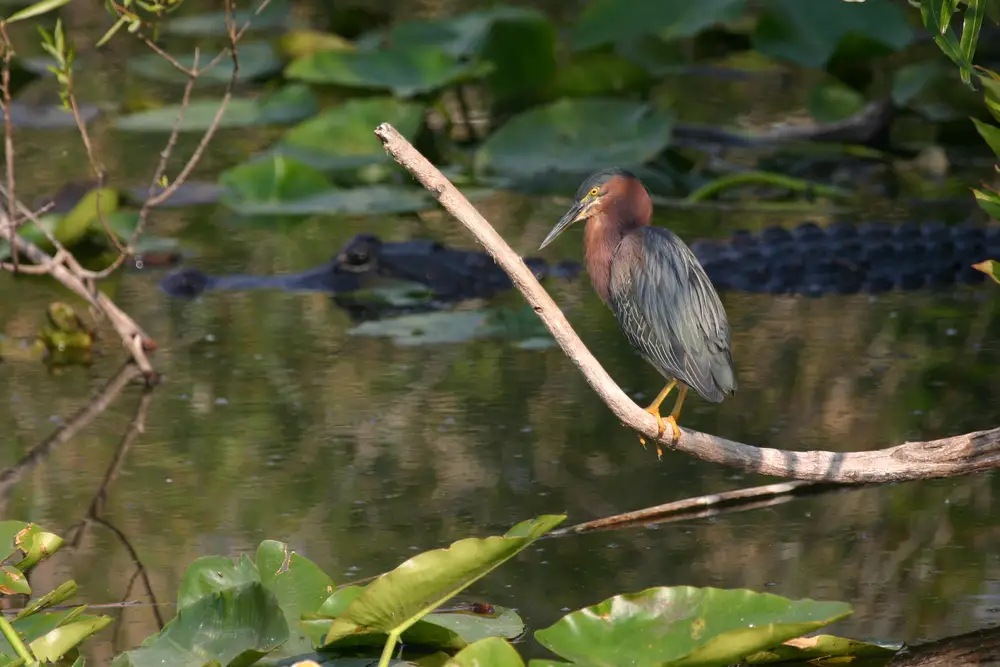
Stalking through the waters of the southeastern United States, the American alligator is a formidable predator that has captured the American imagination. These reptiles can grow up to 15 feet long and weigh as much as 1,000 pounds. While they once faced extinction, conservation efforts have brought their numbers back, and they are now a common sight in states like Florida, Louisiana, and Georgia. The American alligator is an apex predator, often found basking in the sun on riverbanks or lurking just beneath the water’s surface, their eyes and nostrils peering above.
Alligators play a crucial role in their ecosystem, helping maintain the balance by controlling the population of other species. National Geographic describes them as vital to their habitat, creating “gator holes” that serve as an oasis for other wildlife during droughts. For those brave enough, an airboat tour through the Everglades offers an up-close, albeit safe, experience with these prehistoric creatures. But remember to keep a respectful distance, as they are wild animals and can be unpredictable. Witnessing an alligator in its natural habitat is an exhilarating experience that showcases the wild heart of the American South.
3. California Condor: The Giant of the Skies
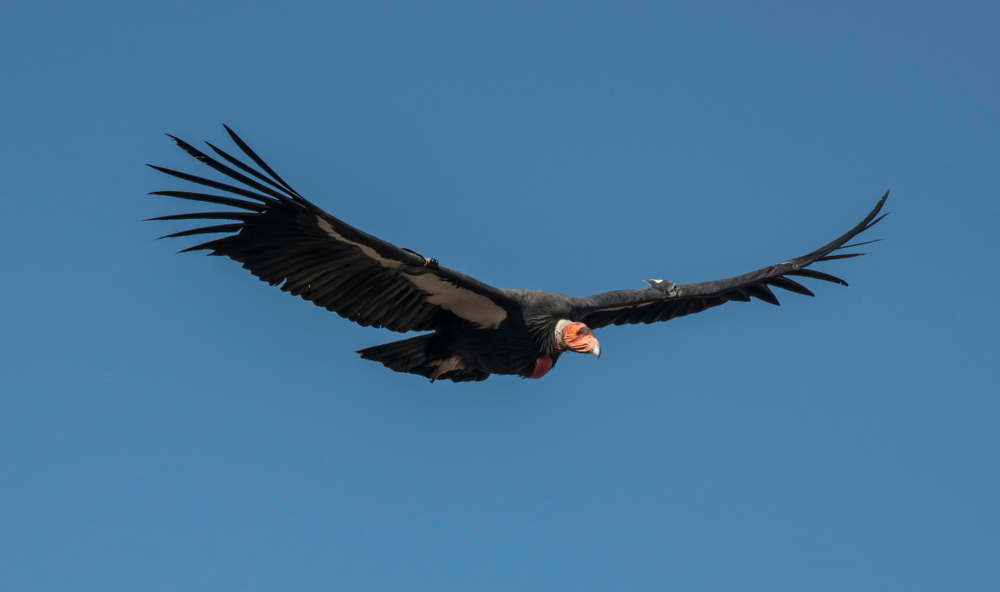
With a wingspan stretching over nine feet, the California condor is the largest flying bird in North America. These magnificent scavengers once teetered on the brink of extinction, with a population as low as 27 birds in the 1980s. Thanks to intensive conservation programs, their numbers have risen to over 300 individuals in the wild today. They primarily inhabit the mountainous regions of California and Arizona, where they soar high above the rugged terrain, searching for carrion. Viewing a California condor in flight is a breathtaking experience, as they effortlessly glide on thermal updrafts with their enormous wingspan.
Condors are highly social creatures, often seen roosting and feeding in groups. They are notoriously shy and will often retreat to high perches if disturbed. The U.S. Fish and Wildlife Service reports that condors can travel up to 150 miles in a single day in search of food. To spot one, head to Pinnacles National Park or the Grand Canyon, where they have been reintroduced. However, patience is key, as condors can be elusive and may require hours of observation. Just be sure to bring a pair of binoculars and a good camera to capture moments of their majestic flight.
4. The Lesser-Known Key Deer: A Miniature Marvel
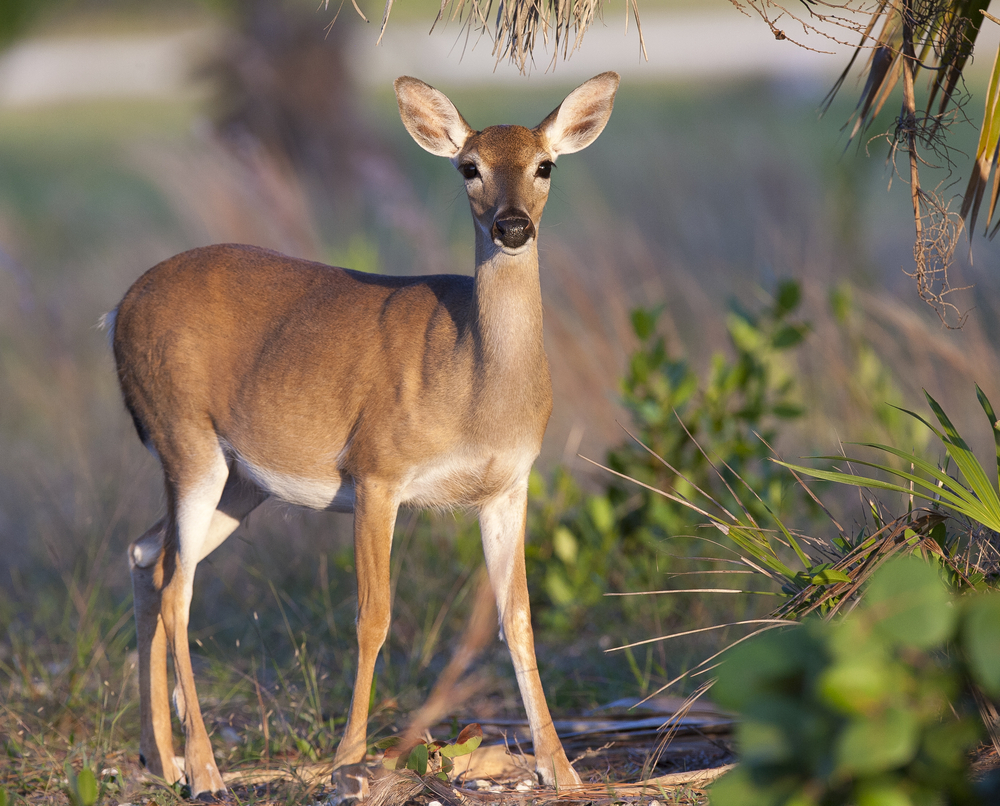
Venture to the Florida Keys, and you might spot a diminutive deer that looks like it stepped out of a fairy tale. The Key deer is a subspecies of the white-tailed deer, and it’s only found in this subtropical region. Standing just about three feet tall at the shoulder, these deer have adapted to their island environment by becoming smaller and more resourceful. With a population of roughly 800 to 1,000 individuals, Key deer are considered endangered, primarily due to habitat loss and human encroachment. They inhabit the lower Florida Keys, with the highest concentration found on Big Pine Key.
Unlike their mainland relatives, Key deer are comfortable around humans, often seen wandering residential areas. This proximity to people has its downsides, as vehicle collisions pose a significant threat to their population. The National Key Deer Refuge was established to protect these gentle creatures and their habitat. If you’re in the area, a visit to this refuge provides an opportunity to see them in their natural setting. Remember to respect their space and drive cautiously in marked areas to protect these unique animals. Observing a Key deer up close is a humbling reminder of the fragile beauty of island ecosystems.
5. The Mysterious Eastern Hellbender
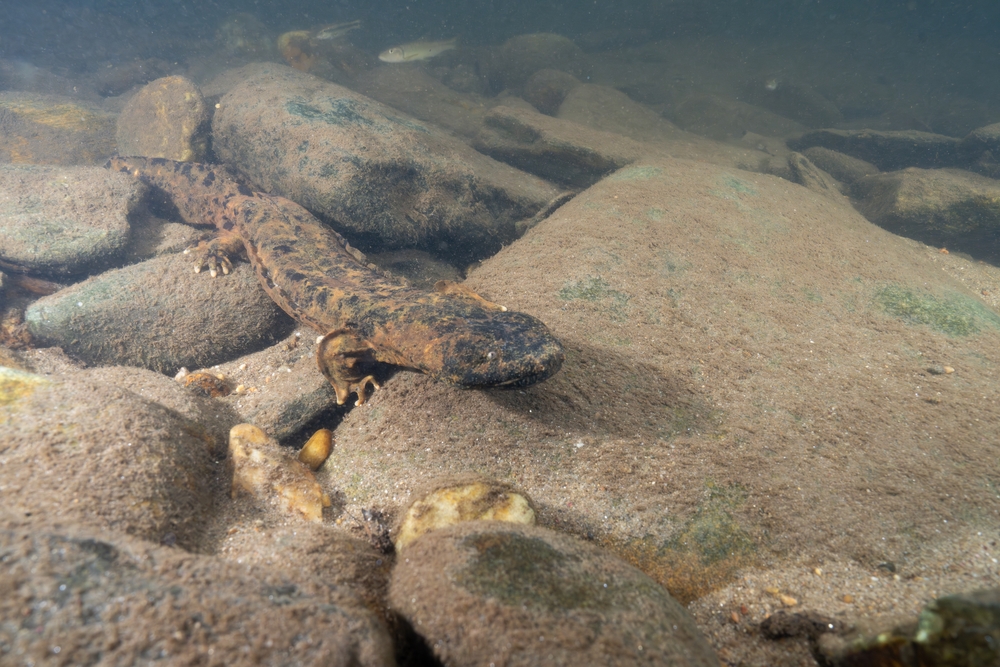
Delve into the cool, swift streams of the Appalachian Mountains, and you might uncover the elusive eastern hellbender. These giant salamanders, often reaching lengths of two feet, are masters of camouflage, blending seamlessly into their rocky surroundings. While they might not win any beauty contests with their wrinkled skin and flat bodies, their unique appearance is perfectly suited to life beneath the water’s surface. Hellbenders, also known as “snot otters” or “old lasagna sides,” play an essential role in their ecosystem by preying on insect larvae and maintaining the aquatic food chain balance.
Unfortunately, hellbender populations have been declining due to habitat destruction, pollution, and disease. Conservation efforts are underway to protect these amphibious giants, focusing on preserving clean waterways and educating the public about their ecological importance. For a chance to see a hellbender, head to the streams and rivers flowing through states like Pennsylvania, Virginia, and North Carolina. Remember to tread lightly and look carefully among the rocks, as these creatures are masters of disguise. Spotting an eastern hellbender in the wild is a rare treat that celebrates the hidden wonders of America’s freshwater habitats.
6. The Vibrant Rainbow Trout: A Fisherman’s Dream
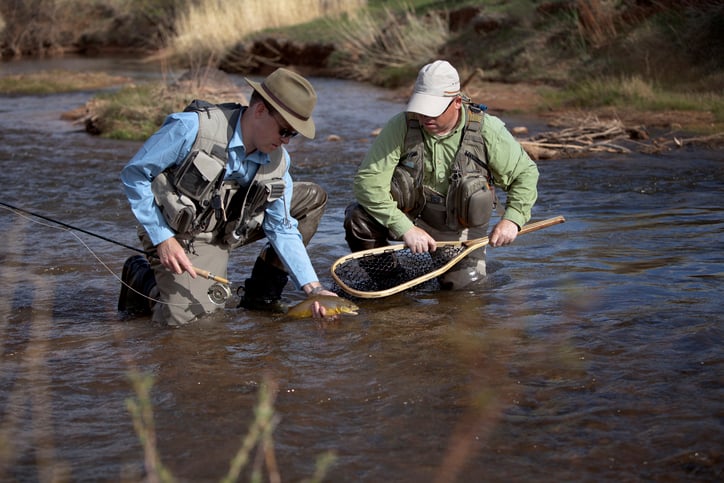
For anglers and nature enthusiasts alike, the rainbow trout is a symbol of vibrant beauty and thrill. Originally native to the cold-water tributaries of the Pacific Ocean in North America, these fish have been introduced to non-native waters around the world due to their popularity as a game fish. Their iridescent hues of pink, blue, and green, along with distinctive spots, make them one of the most striking fish in freshwater habitats. Found in the rivers and lakes of the western United States, rainbow trout thrive in clean, cold waters, where they feed on aquatic insects and smaller fish.
Rainbow trout are known for their acrobatics when hooked, leaping out of the water in a display of strength and agility that makes them a favorite among fishermen. They play a crucial role in their ecosystem by controlling the population of smaller fish and insects, maintaining a balanced aquatic environment. Whether you’re casting a line in Montana’s pristine Flathead Lake or exploring the streams of California’s Sierra Nevada, the pursuit of rainbow trout promises an adventure steeped in natural beauty. Conservation efforts, including habitat restoration and responsible fishing practices, help ensure these dazzling fish continue to thrive. Catching a glimpse—or a fish—of this species is a testament to the joys of America’s wild waterways.
7. The Elusive American Marten: Forest Phantom
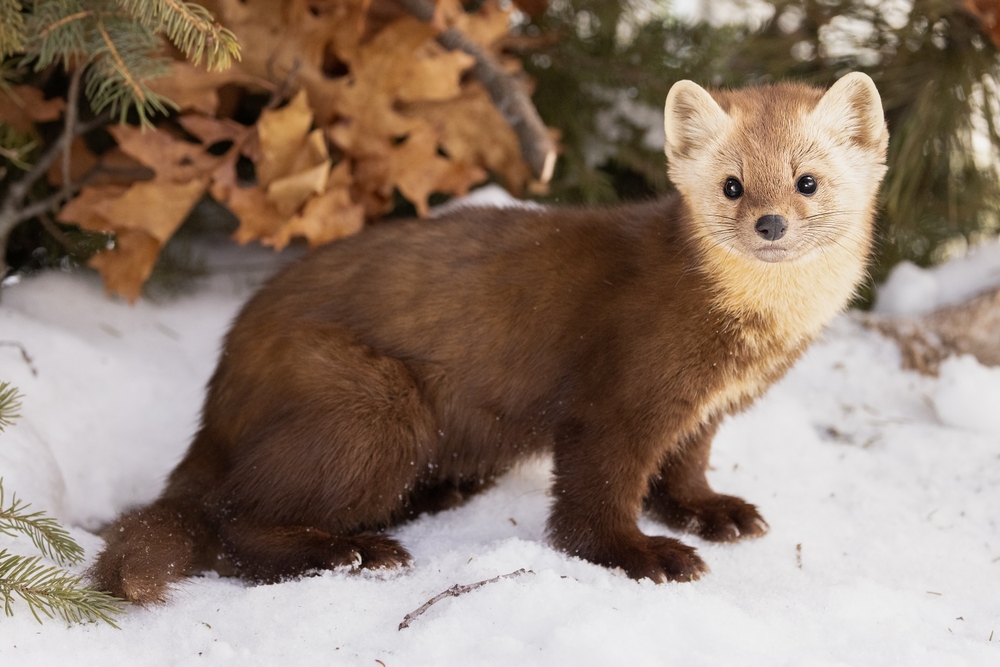
In the dense, boreal forests of the northern United States, the American marten weaves its way through the trees like a shadow. These small, agile mammals are part of the weasel family and are primarily found in coniferous forests across the northern states, including Minnesota, Michigan, and Maine. Their slender bodies, bushy tails, and soft, thick fur make them well-adapted to the cold climates they inhabit. Martens are solitary and nocturnal, relying on their keen sense of smell and hearing to hunt small mammals, birds, and fruits.
Due to their secretive nature and preference for dense, remote woodlands, martens are rarely seen by humans. They play a critical role in their ecosystems by controlling the populations of their prey, thus maintaining a healthy balance in the forest environment. While their numbers have declined due to habitat loss and trapping, conservation efforts are underway to protect and restore their habitats. If you’re hoping to spot a marten, your best bet is to venture into secluded forested areas, where they might be spotted darting amongst the trees. Observing an American marten in the wild is a rewarding experience that offers a glimpse into the life of these elusive forest dwellers.
8. The Resilient Red Wolf: Ghost of the South
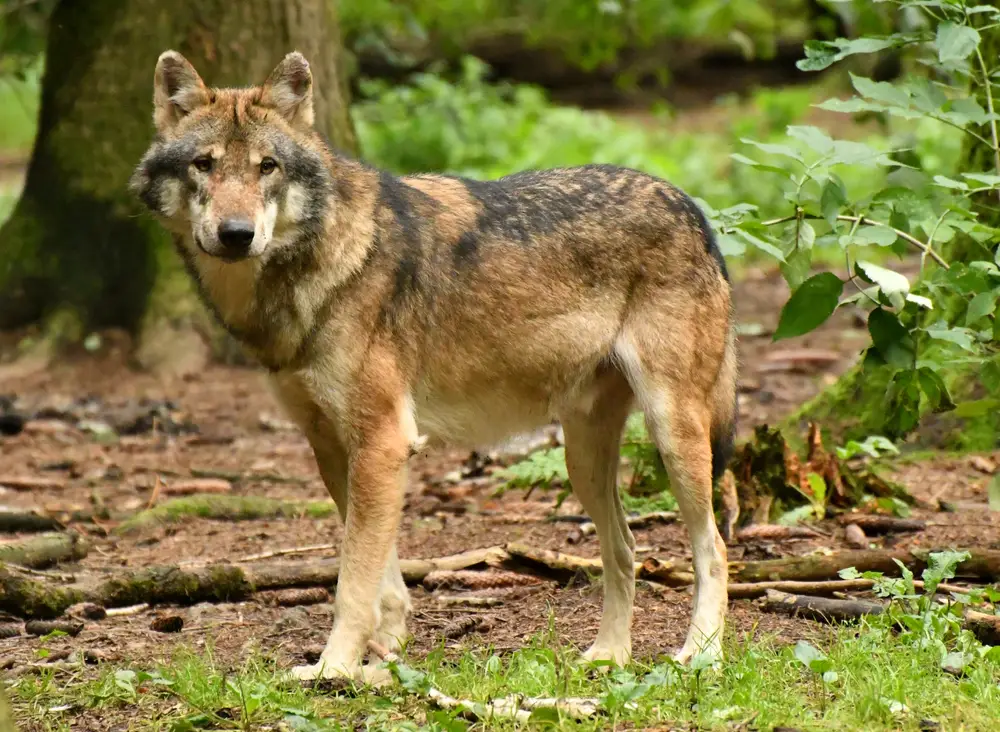
The red wolf once roamed across the southeastern United States, but today it stands as one of the world’s most endangered canids. Smaller and more slender than the gray wolf, red wolves are adapted to a variety of habitats, from forests to swamps. With fewer than 30 individuals remaining in the wild, primarily in North Carolina’s Alligator River National Wildlife Refuge, these wolves are on the brink of extinction. They are distinguishable by their reddish fur, with a mix of gray and black markings that enhance their ghostly appearance in the wild.
Efforts to save the red wolf are ongoing, involving captive breeding programs and habitat restoration. Their survival is crucial for maintaining the ecological balance, as they help control populations of deer and other prey species. For those wanting to learn more about these magnificent creatures, a visit to the Alligator River National Wildlife Refuge offers educational programs and guided tours. While seeing a red wolf in the wild is rare, the experience underscores the importance of conservation efforts. Protecting the red wolf is not just about saving a species; it’s about preserving an integral part of America’s natural heritage.
9. The Peculiar Pygmy Rattlesnake: Small but Mighty
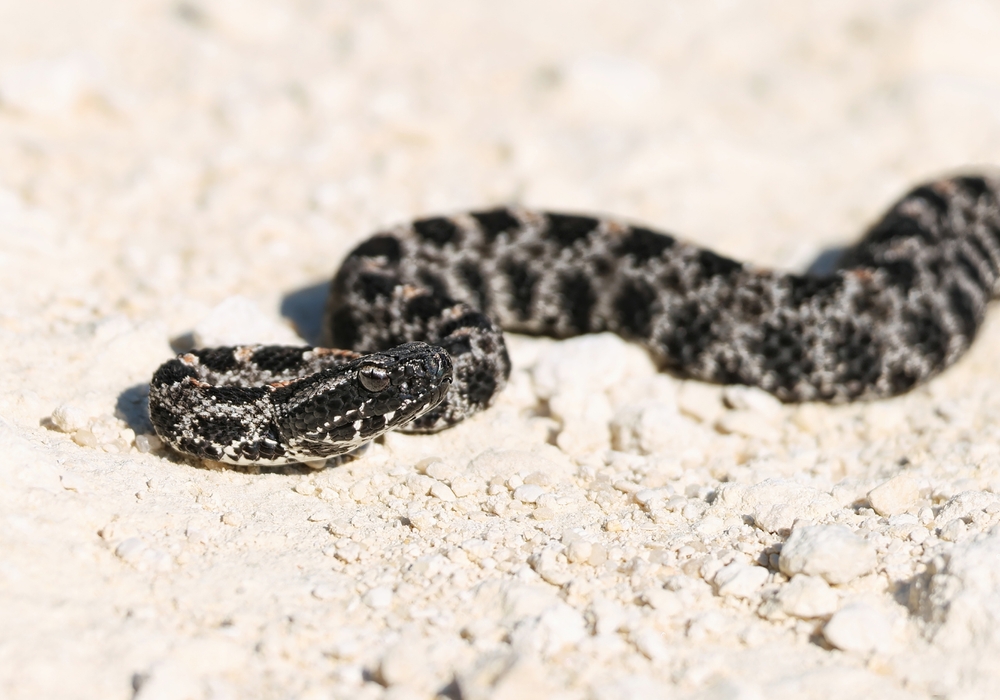
Smaller than its rattlesnake relatives, the pygmy rattlesnake is a fascinating reptile found in the southeastern United States. This diminutive snake, rarely exceeding two feet in length, is known for its distinct rattle, which produces a softer sound compared to larger rattlesnakes. Pygmy rattlesnakes inhabit a variety of environments, from pine forests to wetlands, where they prey on small mammals, birds, and amphibians. While their venom is potent, they pose little threat to humans due to their size and reclusive nature.
Their color pattern varies, often featuring a mix of gray, brown, and reddish hues that provide effective camouflage in their natural habitat. Pygmy rattlesnakes are an essential part of the ecosystem, helping control the population of small prey species. If you’re interested in observing one, they are most active during the warmer months and can be found in states like Florida, Georgia, and Alabama. Always approach with caution and respect, as they are wild animals best appreciated from a safe distance. Encountering a pygmy rattlesnake is a unique experience that highlights the diversity and adaptability of America’s reptilian fauna.
10. The Secretive Spotted Owl: Guardian of Old Forests
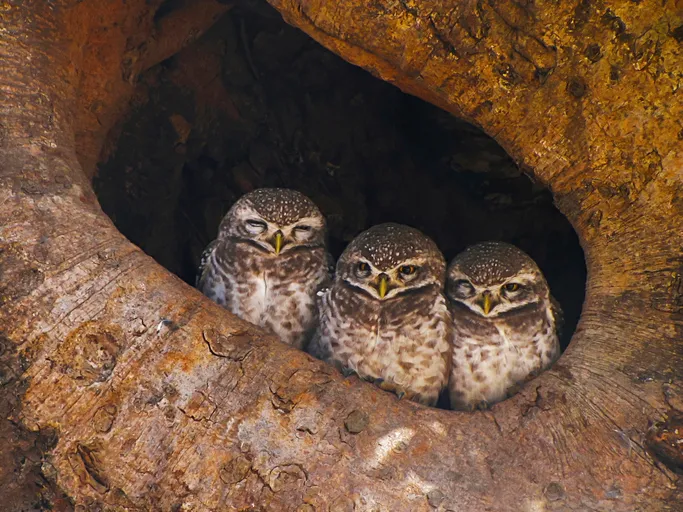
In the ancient forests of the Pacific Northwest, the spotted owl reigns as a symbol of wilderness and conservation. These medium-sized owls, known for their distinctive brown and white spotted plumage, prefer the dense, old-growth forests of Washington, Oregon, and California. They are nocturnal hunters, preying on small mammals, birds, and insects, and are often heard before they are seen, with their haunting calls echoing through the woods. Spotted owls are an indicator species, and their presence reflects the health of the forest ecosystem.
Unfortunately, habitat loss and competition from the invasive barred owl have led to a decline in their population. Conservation efforts focus on preserving these critical habitats and managing forest ecosystems to ensure their survival. For birdwatchers and nature enthusiasts, venturing into the deep woods may reward you with a glimpse of these elusive guardians of the forest. Binoculars and patience are essential tools for spotting them in their natural environment. Observing a spotted owl in the wild is a testament to the enduring beauty of America’s old-growth forests and the importance of conserving these vital ecosystems.
11. The Stunning Scarlet Kingsnake: Nature’s Imitator
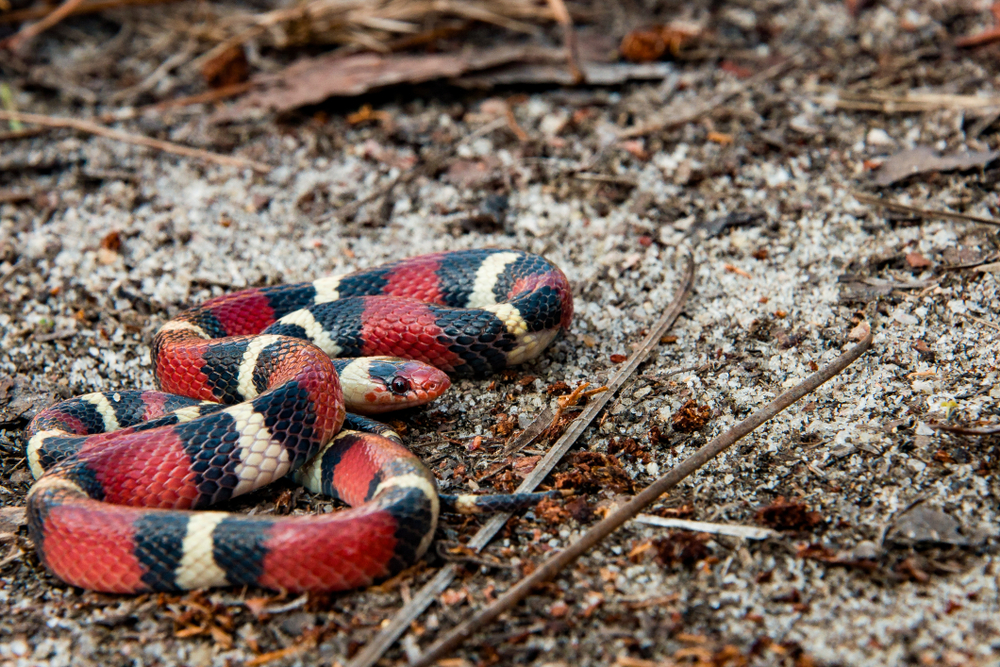
One of nature’s most striking mimics, the scarlet kingsnake, displays vibrant bands of red, black, and yellow that can easily be mistaken for the venomous coral snake. However, the non-venomous scarlet kingsnake is harmless to humans and plays a vital role in controlling rodent populations. These snakes inhabit the forests, fields, and wetlands of the southeastern United States, particularly in states like Florida, Alabama, and Georgia. Their vivid coloration is a classic example of Batesian mimicry, where a harmless species evolves to resemble a more dangerous one to deter predators.
Scarlet kingsnakes are elusive and primarily nocturnal, spending much of their time hidden under logs, rocks, and leaf litter. They are adept climbers and may occasionally be found in trees as they search for prey. If you’re hoping to see one, focus your search on warm, humid nights when these snakes are most active. Remember to observe from a distance, respecting their role in the ecosystem. Discovering a scarlet kingsnake in the wild is a striking reminder of the intricate adaptations and survival strategies found in nature.
12. The Enigmatic Eastern Box Turtle: A Living Fossil
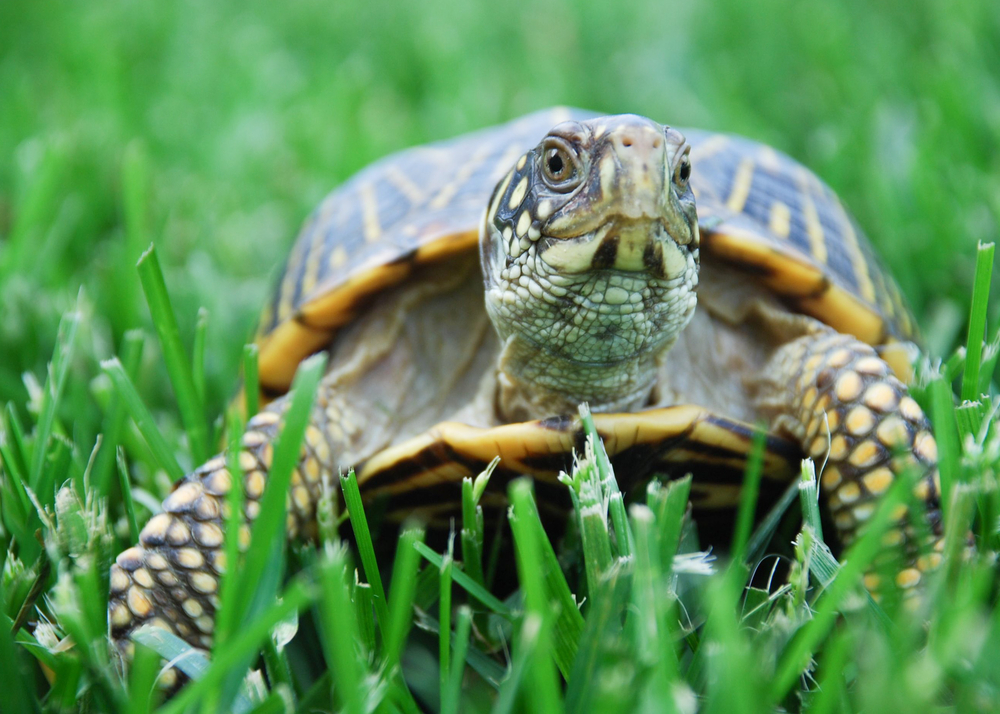
With a lifespan that can exceed 50 years, the eastern box turtle is a testament to the enduring resilience of nature. These terrestrial turtles are native to the eastern United States, where they inhabit forests, meadows, and marshes. Recognizable by their domed shells and colorful patterns, these turtles are slow-moving and highly adaptable. They are omnivorous, feeding on a diverse diet of insects, fruits, and vegetation, which helps maintain ecological balance in their habitats.
Unfortunately, eastern box turtles face threats from habitat fragmentation, road mortality, and the pet trade. Conservation efforts aim to protect their natural habitats and promote responsible stewardship of the land. If you’re lucky, you might encounter an eastern box turtle while hiking through wooded areas or even in suburban gardens. Observing these ancient reptiles in their natural environment is a reminder of the delicate balance needed to preserve biodiversity. With continued efforts, we can ensure that these living fossils continue to thrive in America’s wild landscapes.
13. The Iconic American Bison: The Great Plains Behemoth
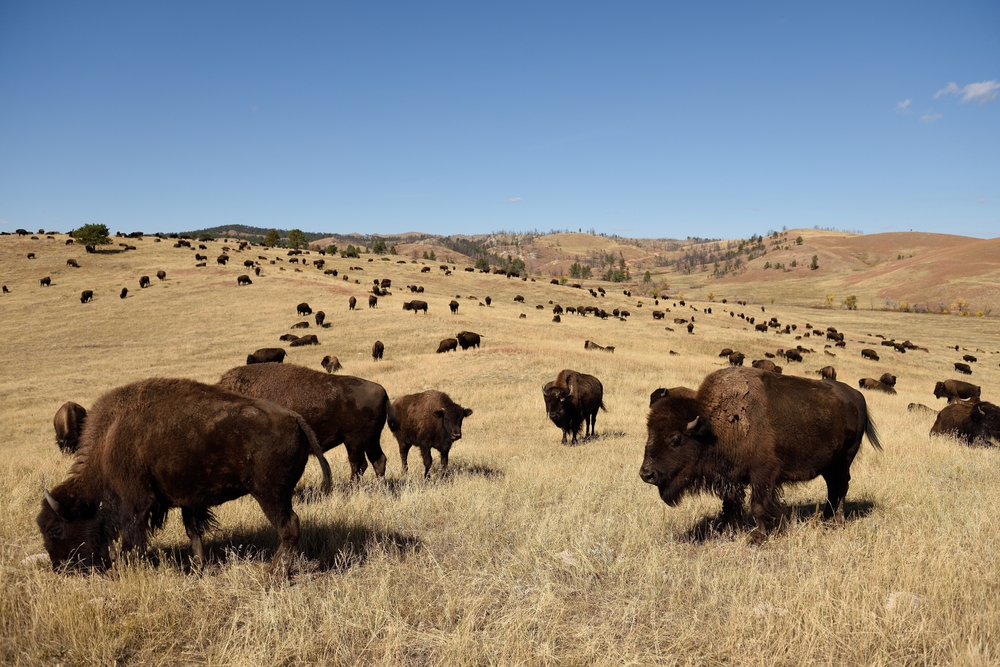
Roaming the plains and prairies of North America, the American bison is an enduring symbol of the American West. Weighing up to 2,000 pounds, bison are the largest land mammals in North America and play a crucial role in maintaining the health of their grassland ecosystems. Historically, millions of bison roamed from Canada to Mexico, but overhunting brought them to the brink of extinction by the late 19th century. Thanks to dedicated conservation efforts, their numbers have rebounded, and protected herds can be found in places like Yellowstone National Park and Wind Cave National Park.
Bison are social animals, often seen in large herds as they graze across expansive grasslands. Their grazing habits help promote plant diversity and create habitats for other wildlife. Observing a herd of bison is a powerful experience, offering a glimpse into the natural history of the Americas. Whether you’re visiting a national park or a wildlife refuge, witnessing these majestic creatures in their natural habitat is a testament to successful conservation efforts. The American bison stands as a symbol of resilience and a reminder of the importance of protecting our natural heritage.
